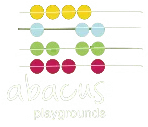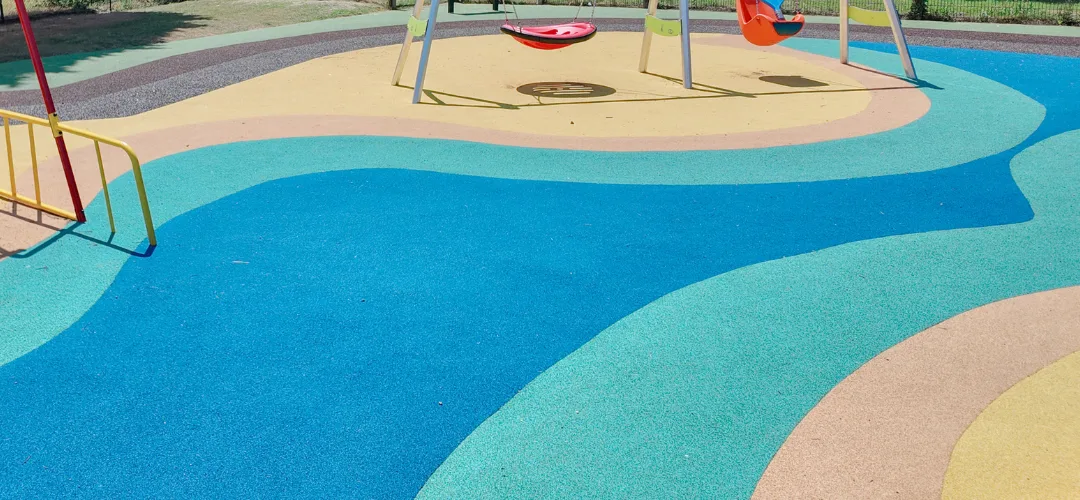Stepping into a school playground, your eyes are often drawn to the climbing frames, swings, or slides. What many people overlook is the ground beneath them. The surfacing is one of the most important parts of the playground. It keeps children safe, makes the area inclusive, and contributes to the overall look of the space.
Safety surfacing for school playgrounds is designed to protect children from falls, support inclusive play, and create long-lasting outdoor areas. Schools can choose from options such as wetpour, rubber mulch, artificial grass, and resin-bound gravel, each offering different benefits for safety, durability, and design.
What is Safety Surfacing
Safety surfacing is the material placed underneath and around play equipment to absorb impact from falls and reduce the risk of serious injury. It is designed to create a safe environment where children can play confidently, while also meeting national safety standards.
In the UK, playground surfacing is guided by the BS EN 1177 standard, which sets out how surfaces should be tested to ensure they provide adequate impact protection. This is often referred to as the Critical Fall Height, which measures the maximum height a child can fall from without a high risk of serious head injury. Schools and councils also refer to BS EN 1176, which links equipment and surfacing requirements together.
Meeting these standards is essential for protecting children and giving reassurance to parents and staff.
Types of Safety Surfacing for Schools
There are several types of surfacing commonly used in schools. Each has its own benefits, and the best choice depends on the equipment being installed, the space available, and the look you want to achieve.
Wetpour Rubber
Wetpour is one of the most popular choices for schools. It is a poured rubber surface that creates a continuous, cushioned finish.
- Provides excellent impact absorption and meets fall height standards
- Available in a wide range of colours and patterns
- Can include educational markings such as numbers, letters, or shapes
- Easy to clean and very durable
Wetpour is often used in both playgrounds and splash parks because it combines safety performance with design flexibility.
Bonded Rubber Mulch
Bonded rubber mulch is made from shredded rubber pieces that are bound together. It is designed to look like natural bark while still providing impact protection.
- A good option for schools that want a natural appearance
- Allows water to drain easily so the surface can be used year-round
- Long-lasting and less prone to scattering compared with loose-fill materials
Artificial Grass with Safety Base
Artificial grass is increasingly popular in schools because it provides a natural look without the maintenance of real grass. Beneath the grass, a cushioned safety pad can be added to meet fall height requirements.
- Soft, clean, and mud-free
- Attractive appearance all year round
- Suitable for wheelchair access and pushchairs
Resin Bound Gravel
Resin bound gravel is not generally used directly under equipment, but it is excellent for paths, walkways, and surrounding areas.
- Provides a smooth, hard-wearing surface
- Good for access routes, including buggy and wheelchair paths
- Can be used alongside wetpour or artificial grass to create a complete scheme
Why Safety Surfacing Matters for Schools
Preventing Injuries
According to the Royal Society for the Prevention of Accidents (RoSPA), around 40,000 children in the UK under 15 visit hospital each year due to playground injuries, most of which are linked to falls from equipment onto the surface. Choosing the right surfacing is therefore one of the most effective ways to reduce risk in school playgrounds RoSPA.
Meeting Duty of Care
Schools have a legal and moral duty to protect children while on site. Using surfacing that complies with BS EN 1177 and BS EN 1176 gives schools confidence that they are meeting those obligations.
Inclusion and Accessibility
Modern playgrounds must be welcoming to all children, regardless of ability. Surfaces such as wetpour or artificial grass create smooth finishes that support wheelchairs and mobility aids. This allows all pupils to take part in play.
Supporting Learning
Safety surfacing can go beyond protection. Many schools use coloured wetpour designs to add games, sports markings or educational patterns that encourage children to be active and learn through play.
Long Term Value
Although high-quality surfacing requires investment, it saves money in the long term. Durable materials last for many years and reduce the need for costly repairs or replacements.
Budgeting for Safety Surfacing
When planning a project, it helps to understand what influences the cost of surfacing.
Key factors include:
- The size of the area to be covered
- The type of material chosen
- The level of groundwork required
- The complexity of the design (for example, colours or educational markings)
Wetpour is usually more expensive than mulch or grass, but its lifespan and low maintenance often make it the best long-term choice. Resin-bound gravel, while not suitable under equipment, is a cost-effective way to cover paths and edges.
Schools may also be able to secure additional funding through council grants, sports initiatives, or parent-teacher associations.
Installation and Maintenance
Even the best surfacing will not perform if it is poorly installed. Professional installation ensures the material is laid to the correct depth, with suitable base layers and drainage. Schools should always ask for certificates that confirm the surfacing has been tested to meet Critical Fall Height requirements.
Ongoing care is equally important. Regular inspections should be carried out to check for cracks, wear, or drainage issues. Cleaning helps to remove debris, moss, or algae that can create slip hazards. Most modern surfacing can also be repaired in sections if small areas become damaged, extending the lifespan of the installation.
Frequently Asked Questions
What is the safest surfacing for schools?
Wetpour is often seen as the best all-around option because it provides consistent impact protection, can be tailored to the design of the playground, and is highly durable.
How long does safety surfacing last?
With proper installation and care, wetpour and resin-bound gravel can last more than a decade. Rubber mulch and artificial grass also have long lifespans, particularly when maintained regularly.
Can old surfaces be refurbished instead of replaced?
Yes. Many surfaces can be repaired, patched, or topped up to extend their life. Full replacement is only needed when the surfacing can no longer meet safety standards.
How much does safety surfacing cost for schools?
Costs vary depending on the size of the project and the material chosen. Wetpour is more of an investment than mulch or grass, but it often provides better long-term value due to its durability.
For schools, playground surfacing is more than a background detail. It is the layer that protects children, supports learning, and makes play spaces inclusive. Choosing the right surfacing means thinking about safety standards, how the space will be used, the age of pupils, and how long the surface needs to last.
Abacus Playgrounds has decades of experience working with schools and councils across the UK. From colourful wetpour installations to natural mulch zones and durable resin-bound pathways, we provide advice, supply, and installation services that put safety first.
If you are planning a new playground or upgrading an existing space, get in touch with our team can guide you through the options and help you choose a surfacing solution that balances safety, design, and long-term value.
References
- Royal Society for the Prevention of Accidents (RoSPA). Playground accidents. Available at: https://www.rospa.com/play-safety/advice-and-information/playground-accidents
- British Standards Institution. BS EN 1177:2018 Impact attenuating playground surfacing. Available at: https://knowledge.bsigroup.com/products/impact-attenuating-playground-surfacing-methods-of-test-for-determination-of-impact-attenuation
- PlaySmart UK. Playground safety surfacing standards. Available at: https://playsmartuk.co.uk/2020/02/18/playground-safety-surfacing-standards/

